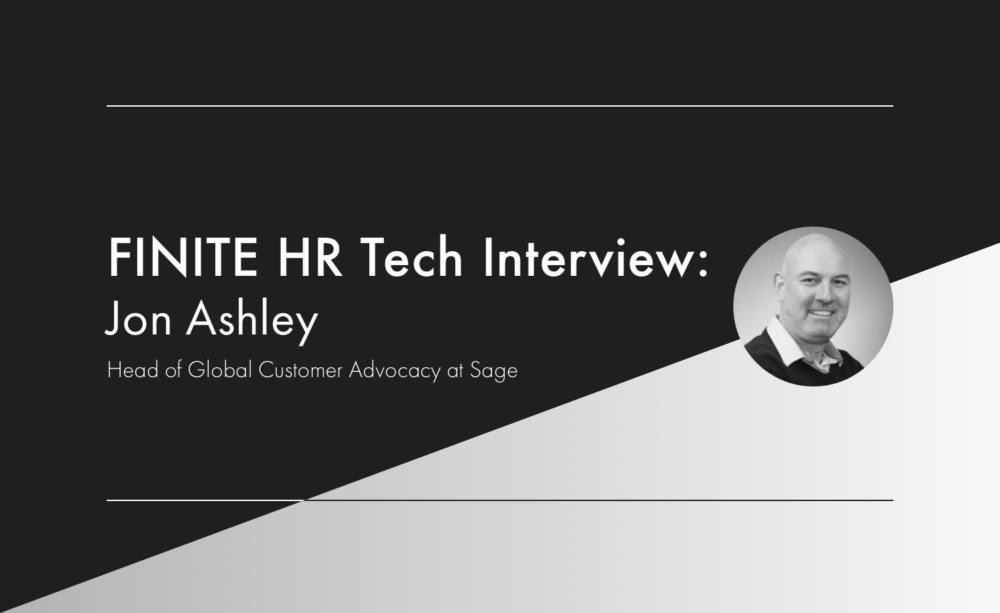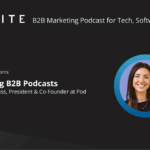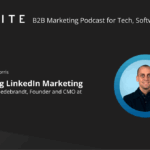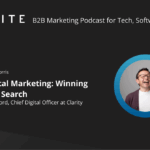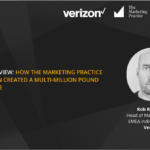Customer advocacy is an increasingly popular marketing strategy that leverages existing loyal customers to drive business growth.
In this edition of the FINITE HR Tech Interview Series, we talked to Jon Ashley, Head of Global Customer Advocacy at Sage. Sage is the global market leader for cloud technology to support finances, operations, and people.
This interview covers:
- What is customer advocacy marketing?
- Why customer advocacy is a lucrative B2B marketing strategy
- The first steps to take in building a customer advocacy programme
- Why customer advocacy is important for HR Tech marketing in particular
FINITE: Hi Jon! Firstly, could you tell us a bit about your background in B2B Tech and customer advocacy?
Jon: Of course. I’ve been in B2B marketing for more than 20 years (after leaving the dark side of Sales where I first plied my trade!) with experience in small business, resellers, partners, distributors and large matrix organisations.
Twelve years ago, I started a journey to develop my expertise in customer/advocacy marketing, which has brought me to my current role as the Head of Advocacy at Sage.
FINITE: Sounds interesting! What is customer advocacy marketing?
Jon: Advocacy marketing is now recognised as a discipline within its own right. Today, organisations will always cite the cost of new customer acquisition against retention, with retention being the focus.
Advocacy marketing has a massive part to play in the retention of customers, as in essence, advocacy programs should be designed to publicise, encourage, and drive customer loyalty.
Customers are demanding more from relations with vendors. They no longer want a simple transactional relationship; they want to be engaged by a brand, and that comes in many forms.
Gone are the days where you sell a product to a customer and never speak again or only at the time of renewal. Customers are in control – they are empowered and they can make decisions to buy based on trusted recommendations from friends, peers, colleagues or their own research. This makes the task of the marketer even more difficult as customers are more sceptical of marketing content, adverts, social posts than ever before.
By engaging and mobilising advocates, you create authentic voice in customer marketing material, or word of mouth marketing, that can be driven through multiple channels.
FINITE: Is customer advocacy a lucrative B2B marketing strategy?
Jon: Advocacy marketing should be top of the agenda when it comes to a marketing strategy. Customer advocacy marketing has proven on many occasions to be more cost effective than traditional marketing elements, with higher returns.
As an example, traditional marketing campaigns involving banner advertising to generate a click to MQL can be costly, whilst yielding little in positive results. As an alternative, ask loyal advocates to post content on a social channel or to help author a blog is more targeted, as you will reach the advocate’s own network. Consumers of that content are much more likely to trust the opinion of the advocate and therefore trust your brand.
Another approach is to get new business referrals from advocates. A successful and well documented example was Tesla, who challenged their loyal customers to refer potential customers to them. In return for every prospect they converted, the referrer advocate could claim a different incentive from Tesla such as branded merchandise, upgrades to their vehicles, credit towards a new car or special offers not available to anyone else. The result? A single advocate generated $16m in sales for Tesla. (see here)
FINITE: Great advice! What are the first steps you take in starting a customer advocacy programme?
Jon:
- Analyse your customer data to understand whether you have advocates, who they are and what you currently do with them. Also, get an understanding of the what they currently do for you. You may be surprised to find they are engaged by someone else in your organisation. Often they are acting as a sales reference or they have left you a positive review.
- Once you have that data, decide what you what you are trying to achieve through your advocates by aligning it with your sales and marketing strategies. In its most basic form, an advocacy program could simply be a formalised approach to recruiting and managing reference customers, driving better qualified referrals or even positive reviews on your targeted review sites. The former two could have a direct influence on revenue, so ensure you can demonstrate this and get sales excited!
The amount of advocates you have will determine whether you can run your program in manual mode (using existing tech stacks manually like MS Office) or whether you need to scale by creating a fully-fledged, platform-based program utilising a SaaS offering.
FINITE: Why is customer advocacy important in HR Tech, and Sage in particular?
Jon: Advocacy is becoming a vital ingredient in the B2B marketing stack as it complements so many activities and initiatives. Advocacy is not just limited to customers though, it’s just as important as an internal opportunity with employees.
Although a marketing-led initiative, HR professionals can utilise the power of employee advocacy to create positivity about their own brand and business. That can help in attracting top talent, employee retention, eNPS, influencing positioning on review websites such as Glassdoor, and contributing to the overall HR strategy.
The employee advocacy program creates a thriving community for employees to get involved in the promotion of the business, rewarding top performers, adds a degree of competition, and creates a real sense of belonging by encouraging a positive, collaborative workforce.
Employees can also influence businesses growth through increased company visibility, brand recognition and share of voice in an overcrowded space. Firms with employee advocacy programs grow faster than those without (source: sociuu.com, Jan 2020).
FINITE: Thanks for the great insights into customer advocacy Jon!
To read the last edition of the FINITE HR Tech Interview Series, and to learn about building and maintaining an HR Tech marketing strategy, head here!
